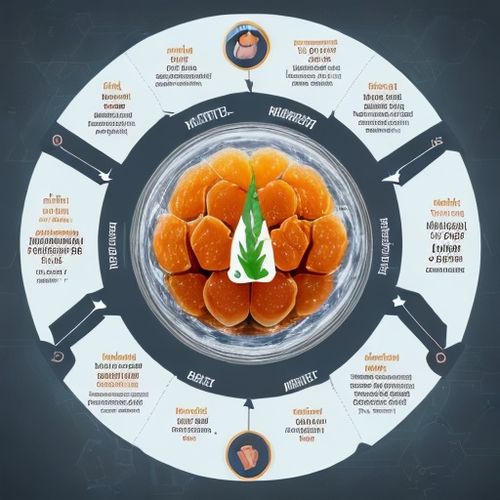The nutritional quality of plant-based proteins has long been a subject of scientific scrutiny and consumer concern. Unlike animal proteins that contain all nine essential amino acids in sufficient quantities, most plant proteins exhibit varying degrees of amino acid deficiencies. This fundamental difference has led to the development of amino acid scoring systems that evaluate protein completeness and help guide dietary choices for vegetarians, vegans, and flexitarians alike.
Amino acid scoring represents a crucial methodology for assessing protein quality by comparing the concentration of essential amino acids in a food source against human requirements. The concept originated from the recognition that not all proteins are created equal - their ability to support growth, maintenance, and repair depends entirely on their amino acid composition. For plant proteins, this evaluation becomes particularly significant as they frequently lack one or more essential amino acids in adequate amounts.
The most advanced and internationally recognized scoring system today is the Protein Digestibility-Corrected Amino Acid Score (PDCAAS), adopted by the FAO/WHO in 1993. This method evaluates proteins based on both their amino acid profile and how well the human body can digest them. More recently, the Digestible Indispensable Amino Acid Score (DIAAS) has emerged as a potentially superior alternative, offering more precise measurements of amino acid bioavailability at the ileal level rather than fecal level.
When examining plant proteins through these scoring lenses, clear patterns emerge. Legumes like soybeans and lentils typically score well, often achieving PDCAAS values close to the perfect score of 1.0 (equivalent to egg or milk protein). Soy protein isolate, for instance, boasts a PDCAAS of 0.99, making it one of the few plant proteins considered "complete." Other legumes such as chickpeas and black beans score slightly lower but still provide substantial amino acid coverage.
Cereals present a different nutritional picture. While they contain moderate amounts of protein, most grains are deficient in lysine, an essential amino acid critical for collagen formation and calcium absorption. Wheat protein has a PDCAAS of approximately 0.42, while rice protein fares slightly better at 0.50-0.60 depending on processing methods. Corn protein shows similar lysine limitations with scores around 0.45. These deficiencies explain why populations relying heavily on cereal-based diets often experience protein malnutrition despite adequate caloric intake.
The complementary relationship between legumes and grains forms the scientific basis for traditional food pairings like rice and beans or hummus with pita bread. When consumed together within the same meal or throughout the day, these combinations create a more balanced amino acid profile than either food could provide alone. The lysine-rich legumes compensate for the lysine deficiency in grains, while grains provide the methionine and cysteine that some legumes lack. This nutritional synergy has sustained vegetarian cultures for millennia and continues to inform modern plant-based diet planning.
Nuts and seeds occupy an interesting middle ground in amino acid scoring. While generally not considered complete proteins, many varieties contain substantial amounts of essential amino acids. Pumpkin seeds, for example, contain all nine essential amino acids with particularly high levels of tryptophan and lysine. Almonds provide respectable amounts of branched-chain amino acids (BCAAs) important for muscle protein synthesis. However, most nuts and seeds have PDCAAS values ranging from 0.40-0.70, indicating they're best consumed as part of a varied plant protein portfolio rather than primary protein sources.
Modern food technology has developed methods to enhance the amino acid profile of plant proteins through strategic blending and fermentation. Protein complementation - the intentional combination of different plant proteins - now occurs at industrial scales to create products with balanced amino acid scores. Pea and rice protein blends have become particularly popular in sports nutrition, achieving PDCAAS values comparable to whey protein when properly proportioned. Fermentation techniques can further improve amino acid availability by breaking down anti-nutritional factors that inhibit protein digestion.
The limitations of amino acid scoring systems deserve acknowledgment. Both PDCAAS and DIAAS provide static measurements that don't account for the dynamic nature of human metabolism or individual variations in digestion. They also don't consider the broader nutritional context - a food might have an excellent amino acid score but contain excessive sodium or saturated fat. Furthermore, these scores typically evaluate isolated proteins rather than whole foods where fiber and phytochemicals may influence protein utilization.
Emerging research suggests that our understanding of plant protein quality may need refinement. Some studies indicate that the body's ability to utilize plant amino acids improves with regular consumption as gut microbiota adapt. Other investigations reveal that certain plant proteins, particularly from algae and aquatic plants, possess unexpectedly complete amino acid profiles. These findings challenge longstanding assumptions and may lead to revisions in how we score and value plant proteins in the future.
For consumers navigating the plant protein landscape, amino acid scores provide valuable but incomplete guidance. While helpful for comparing protein sources, these metrics shouldn't overshadow the importance of dietary variety. A diverse intake of legumes, whole grains, nuts, seeds, and vegetables naturally ensures adequate amino acid coverage while delivering the full spectrum of phytonutrients unique to plant foods. This holistic approach aligns with both current nutritional science and traditional dietary wisdom.
The food industry's response to amino acid scoring has been multifaceted. Product developers now routinely formulate plant-based meats and dairy alternatives with complementary proteins to achieve optimal scores. Some manufacturers add isolated amino acids to overcome specific deficiencies - lysine fortification in wheat-based products being a common example. These innovations have significantly improved the nutritional profile of processed plant proteins, narrowing the gap with animal-derived counterparts.
Athletes and physically active individuals represent a demographic particularly concerned with amino acid scoring. The leucine content of plant proteins - a key trigger for muscle protein synthesis - often falls below the optimal threshold found in whey protein. This has led to specialized plant protein blends with higher BCAA concentrations and strategic timing recommendations to maximize muscle adaptation. While challenges remain, contemporary sports nutrition demonstrates that carefully planned plant-based diets can effectively support even elite athletic performance.
Public health implications of amino acid scoring extend far beyond individual dietary choices. In developing regions where animal protein access remains limited, understanding plant protein quality becomes essential for combating malnutrition. Agricultural programs that promote high-quality plant protein crops and educate about proper food combining can significantly improve population health outcomes. Even in affluent nations, better awareness of amino acid scoring could help optimize plant-based diets for various life stages and health conditions.
As global protein consumption patterns shift toward more sustainable sources, amino acid scoring will likely play an increasingly prominent role in food policy and labeling. Some nutrition advocates propose that protein quality metrics should appear alongside quantity information on product packaging. Others suggest incorporating these scores into dietary guidelines to help consumers make informed plant protein choices. Such measures could accelerate the transition to plant-forward diets while ensuring nutritional adequacy.
The scientific journey of amino acid scoring continues to evolve with our growing understanding of plant proteins. What began as a simple comparison of amino acid quantities has developed into sophisticated models accounting for digestion, absorption, and metabolic utilization. Future scoring systems may incorporate personalized factors like gut microbiome composition or genetic polymorphisms in amino acid metabolism. This ongoing refinement promises to deepen our appreciation of plant proteins' nutritional value and their role in sustainable food systems.
Ultimately, amino acid scoring serves as an important tool rather than an absolute verdict on plant protein quality. These metrics provide a scientific framework for evaluating proteins but shouldn't overshadow the broader nutritional and environmental benefits of plant-based diets. As research progresses and food innovation continues, we can anticipate even more sophisticated approaches to assessing and optimizing the protein quality of plant foods for human health.

By /May 21, 2025

By /May 21, 2025

By /May 21, 2025

By /May 21, 2025

By /May 21, 2025

By /May 21, 2025

By /May 21, 2025

By /May 21, 2025

By Michael Brown/May 18, 2025

By James Moore/May 18, 2025

By Thomas Roberts/May 18, 2025

By Amanda Phillips/May 18, 2025

By James Moore/May 18, 2025

By Laura Wilson/May 18, 2025

By Emily Johnson/May 18, 2025

By Joshua Howard/May 18, 2025

By David Anderson/May 18, 2025

By Sophia Lewis/May 18, 2025

By John Smith/Apr 22, 2025

By Emma Thompson/Apr 22, 2025